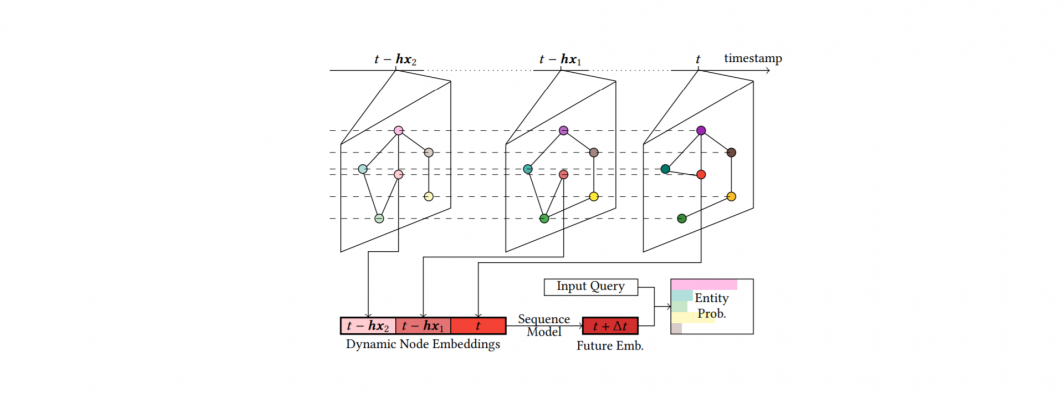
A new paper by researchers at the University of Southern California and the US Army Research Lab explores temporal knowledge graph prediction:
Temporal Knowledge Graphs store events in the form of subjects, relations, objects, and timestamps which are often represented by dynamic heterogeneous graphs. Event forecasting is a critical and challenging task in Temporal Knowledge Graph reasoning that predicts the subject or object of an event in the future. To obtain temporal embeddings multi-step away in the future, existing methods learn generative models that capture the joint distribution of the observed events. To reduce the high computation costs, these methods rely on unrealistic assumptions of independence and approximations in training and inference. In this work, we propose SeDyT, a discriminative framework that performs sequence modeling on the dynamic entity embeddings to solve the multi-step event forecasting problem. SeDyT consists of two components: a Temporal Graph Neural Network that generates dynamic entity embeddings in the past and a sequence model that predicts the entity embeddings in the future. Compared with the generative models, SeDyT does not rely on any heuristic-based probability model and has low computation complexity in both training and inference. SeDyT is compatible with most Temporal Graph Neural Networks and sequence models. We also design an efficient training method that trains the two components in one gradient descent propagation. We evaluate the performance of SeDyT on five popular datasets. By combining temporal Graph Neural Network models and sequence models, SeDyT achieves an average of 2.4% MRR improvement when not using the validation set and more than 10% MRR improvement when using the validation set.